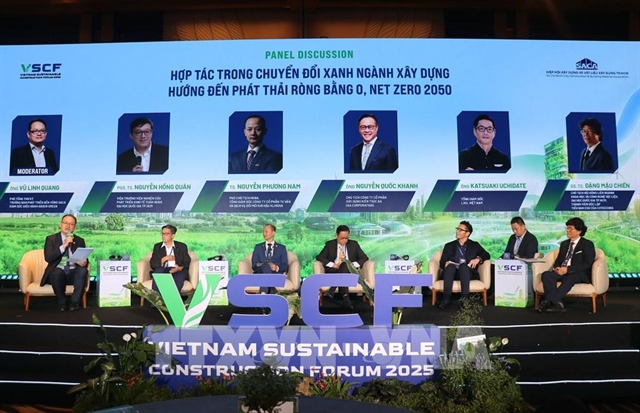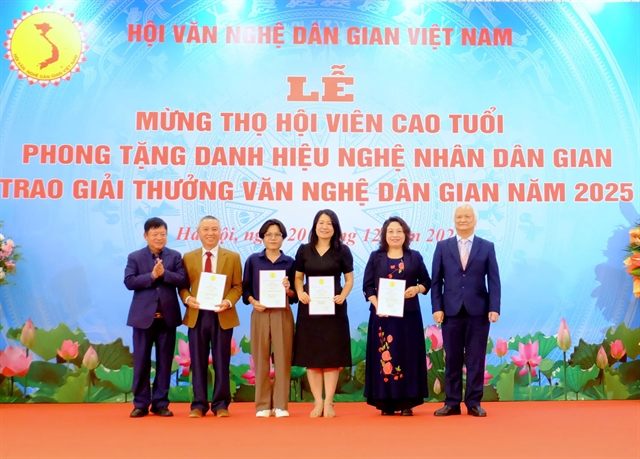 Economy
Economy
.jpg)

|
| Minister of Agriculture and Rural Development Nguyễn Xuân Cường |
Increasing agricultural exports to the EU will not only enhance the value of exports but also show Vietnamese products can enter any market in the world. Minister of Agriculture and Rural Development Nguyễn Xuân Cường spoke to Việt Nam News about this issue
Việt Nam has many opportunities for development thanks to free trade agreements (FTAs), will they open a large consumption market for agricultural products?
Taking advantage of the Europe-Vietnam Free Trade Agreement (EVFTA), which was officially effective from August 1, we have defined the agricultural sector as an advantageous industry based on three advantages of export trade, technology, including processing, from the EU through foreign direct investment, and co-operation to improve management capacity through standards, regulations and resource training.
In terms of agricultural exports, we have worked with the Ministry of Industry and Trade, localities, businesses and farmers to prepare, including restructuring industries and connecting chains from raw materials to processing, especially the last stage of packaging and design of goods for export.
With our good preparations, the agriculture growth in August was 17 per cent higher than the previous month. We have identified a number of advantageous commodity groups including vegetables, fruit, seafood and industrial crops such as tea, coffee and cashew, which all will have their quality checked carefully.
What products now have advantages to export to the EU?
Rice, shrimp, coffee and fruits are advantageous items of Việt Nam in the EU market.
For coffee, we can add value to the EU market after the tax rate drops from 15 per cent to zero. In August, Việt Nam’s coffee export value to the EU reached US$76 million, up 34.7 per cent compared to the previous month.
The EU is Việt Nam’s largest market for coffee, accounting for 40 per cent of the country’s total volume and 38 per cent of total export turnover, marking an annual average export value of $1.2 billion-$4 billion in the past five years.
The export of rice also has positive signals. Since the EVFTA came into effect, the positive effects have spread to rice exports. The price of rice shipped to the EU market has increased to $200 per tonne.
Meanwhile, fresh vegetables and fruits have more opportunities to enter the EU market, which is the fourth-largest export market of Vietnamese fruits and vegetables. In addition to the import tax cut from the EVFTA, its provisions are expected to help Việt Nam enhance competitiveness in this market.
The export value of Việt Nam's fruit and vegetable products to the EU in August was estimated at $14.7 million, up 25.2 per cent over the previous month.
As for fisheries, the tariff cut is expected to create a great opportunity for seafood exports. The EU will eliminate tariffs on 86.5 per cent of Việt Nam's seafood export turnover within three years, 90.3 per cent within five years and 100 per cent within seven years. For canned tuna, the EU gives Việt Nam a quota of 11,500 tonnes.
Which solutions should the agriculture sector prioritise?
The EU market is opening up wide doors for Vietnamese agricultural products, but to meet the requirements of this market, the reorganisation of production towards ensuring food safety and traceability is extremely important.
We will continue to co-ordinate with businesses, encouraging them to concentrate on orders of advantageous industries such as vegetables, fruits, seafood and cash crops such as tea, coffee and cashew. In the long run, we need sustainable solutions to promote chain production.
We must recognise that the EU market is not only qualified to evaluate export value but also a credit to prove the production capacity of Vietnamese farmers and Vietnamese goods, which can meet the strict requirements of any market in the world.
Việt Nam aims to earn $40 billion from the export of agricultural, forestry and fishery products this year. Will the COVID-19 pandemic affect this target?
The agriculture sector, like other sectors, is endeavouring to achieve the Government’s dual goal to ensure both pandemic prevention and export target. Since the beginning of this year, trade policies have been quite flexible to exploit potential markets. The results up to now are quite positive, so we can reach the set goals.
From now to the end of the year, the agriculture sector will inaugurate 10-12 major projects, focusing on processing, which is our weakest stage. These projects include a seafood processing factory, a joint venture between Việt Nam and EU on the “win-win” principle, is expected to push the country’s seafood industry, a feed processing factory in the southern province of Bình Phước, and a large vegetables and fruits processing factory in the northern province of Sơn La. — VNS
.jpg)



